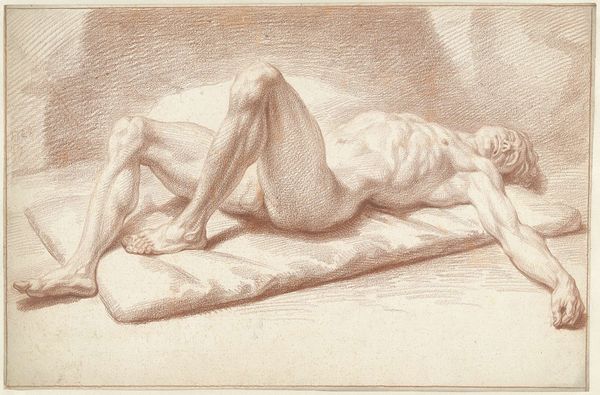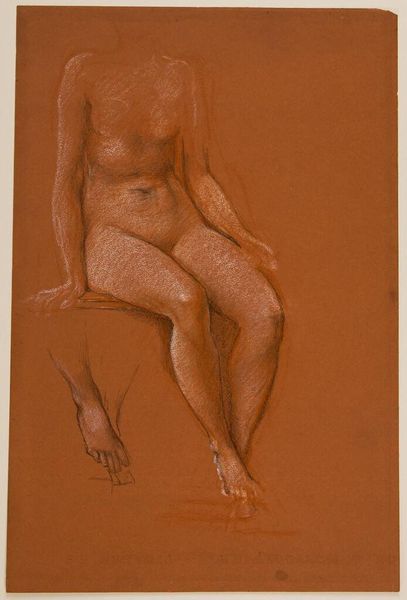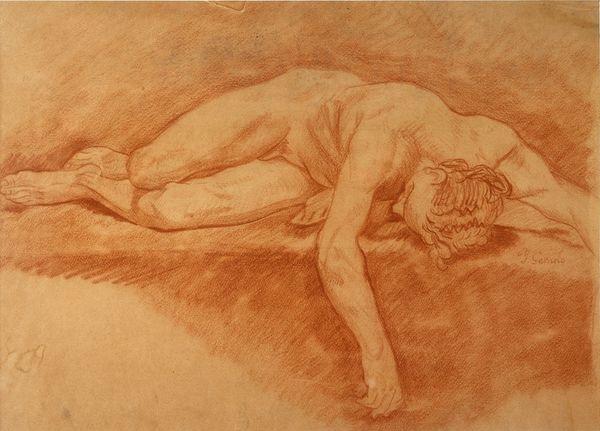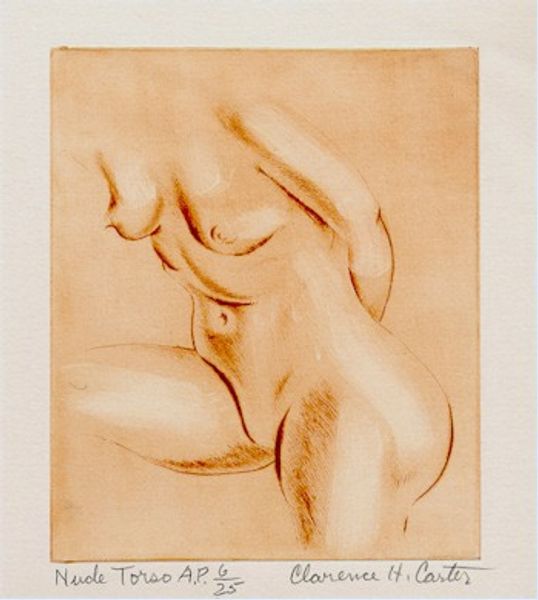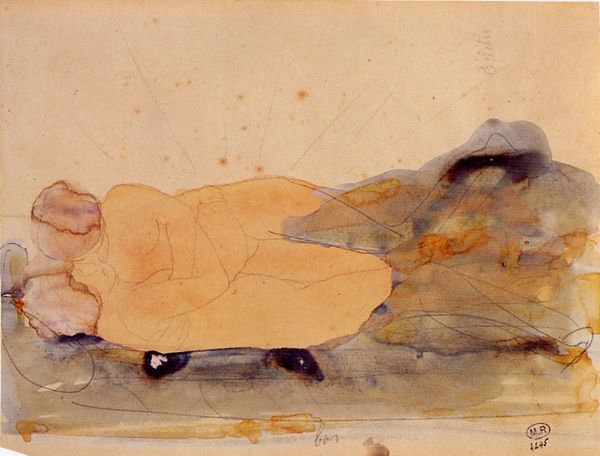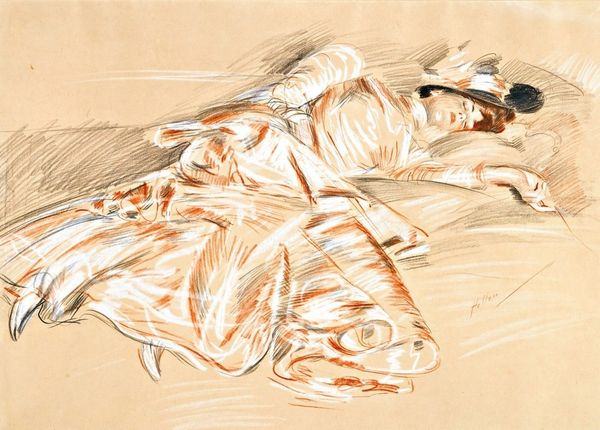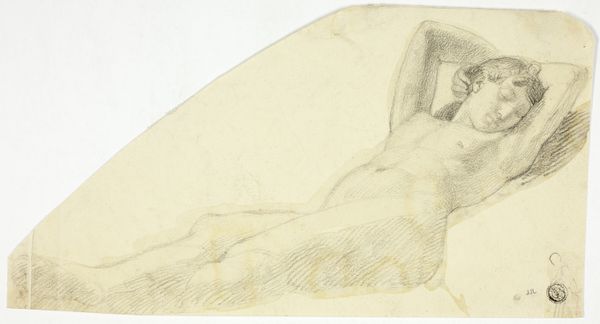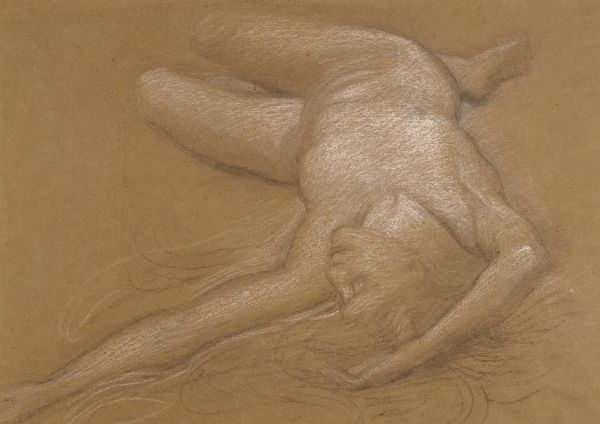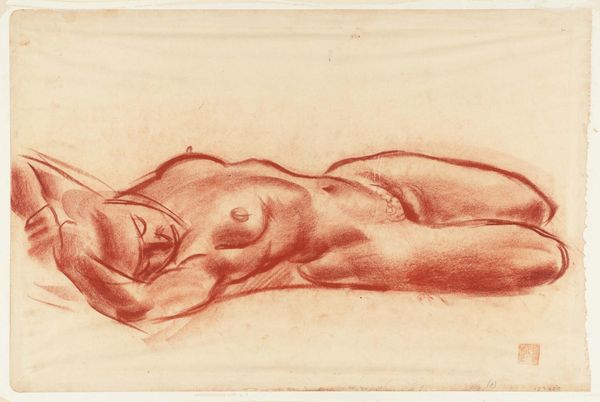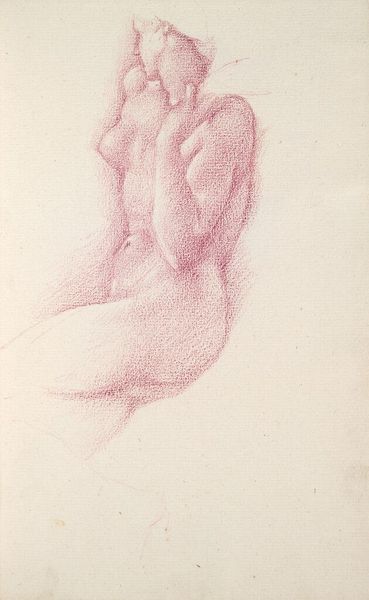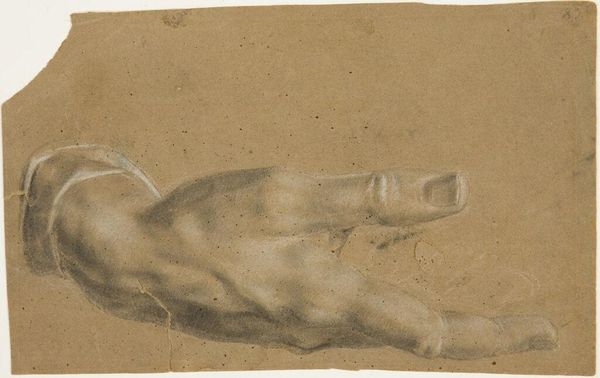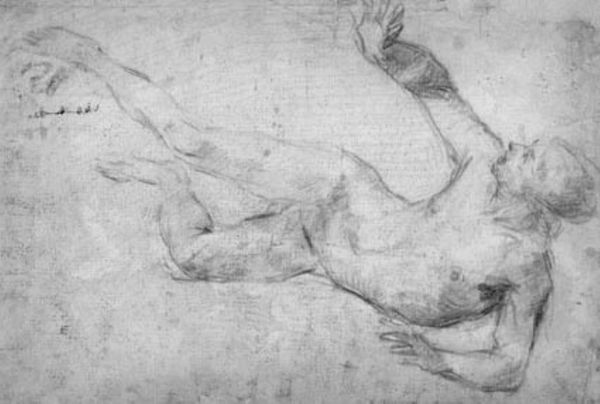
drawing, pencil, charcoal
#
drawing
#
charcoal drawing
#
figuration
#
pencil
#
charcoal
#
charcoal
#
nude
#
realism
Dimensions: 253 mm (height) x 427 mm (width) (bladmaal)
Editor: This drawing, titled "Kvinde, der laeser i en seng," or "Woman Reading in Bed," is by Charles Alexandre Malfray, dated sometime between 1887 and 1940. It's rendered in charcoal and pencil, and the monochromatic palette gives it such an intimate feel. What compositional elements strike you most about it? Curator: The immediacy of the charcoal line is particularly compelling. Note how Malfray uses a combination of hatching and smudging to define form and volume. It isn't photorealistic but conveys something of its inherent structure, and is heightened by the relatively indistinct features on the subject’s face, forcing one to consider the line over detail. Observe the balance and direction of the figure as it lays along the compositional space, giving pause and a sense of balance that is then broken apart in the mass of shadowed tones around the subjects head. Editor: The rendering does seem more concerned with the overall form than specifics. The relationship between those dark shadows, along with the use of varied shading on the face and body is clear. Does that interplay indicate a conscious decision about realism? Curator: Precisely. Note, for example, the relatively limited tonal range, particularly around the subject's abdomen and legs. This directs attention away from pure anatomical accuracy and reinforces the drawing as a construction, an arrangement of lines and shades which constitute the formal representation. This echoes elements of expressionism despite it otherwise adopting a sense of realism. What do you make of how the reading book, central to understanding this as a real-world place and setting, are almost completely unformed in the charcoal lines? Editor: Interesting. Perhaps Malfray prioritized capturing the essence of a private moment over precise detail, suggesting the act of reading without defining the content. It is like looking at something real, but something in its visual structure indicates there are multiple layers of meaning beyond what the figure depicts. Curator: Yes. In decoding the image via its structure, we are, indeed, also provided insight into process, representation and its very making. Editor: Thanks, that focus really brings a new perspective to it. Now I'm more attuned to appreciate how formal elements constitute more than just realist mimetic gestures.
Comments
No comments
Be the first to comment and join the conversation on the ultimate creative platform.
